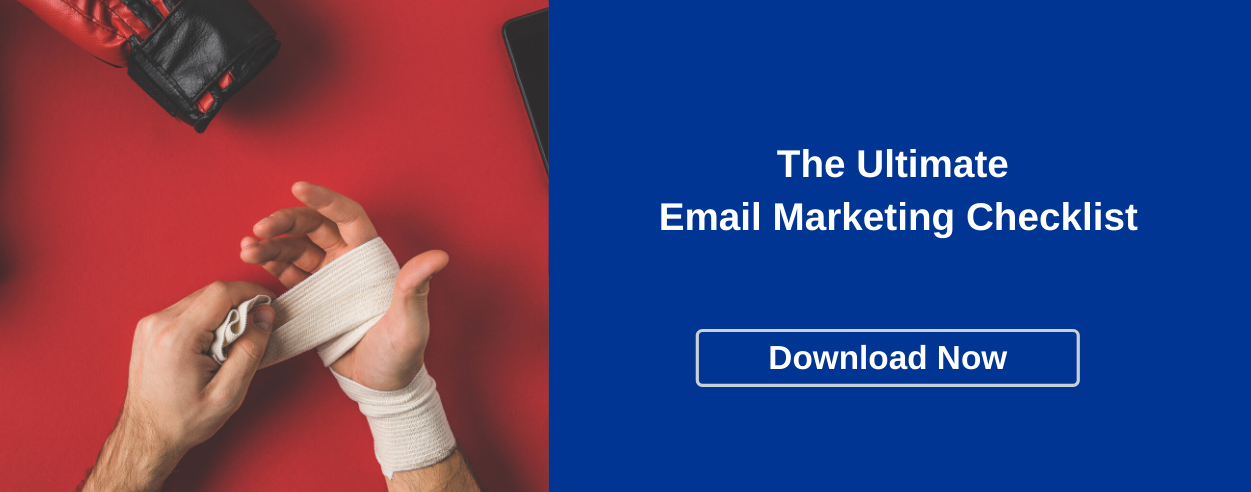6 Things To Keep In Mind When Segmenting Your Email Database
If you have recently ventured into the world of email marketing, you may be familiar with segmentation.
What Is Email Segmentation?
Segmentation, when it comes to your email marketing distribution list, refers to the groups and labelling of contacts with similar traits. These traits can include shared behaviours, shared demographics, or shared customer journeys/timelines. The limit of what traits you use to segment your audience depends on your CRM, and what information it collects from your contacts.
Why Is Email Segmentation Important?
Segmentation can be helpful because it allows you to personalize your messaging to the subscriber, and in turn, make it more likely that they open your emails. For example, if you had multiple martial arts schools, you may want to segment your audiences by their city—or more specifically their postal/zip code if they provide it—so that you have specific lists who receive updates about the school that is closest to them. Of course, this is just one of numerous ways to segment your audience. But we will explore this and other considerations later on.

What To Consider When Segmenting Your Email Database
Segmented email lists can be a powerful tool in your marketing strategy. However, before you start segmenting, you should take into consideration a few things that may affect your lists.
Who do I want to send emails to?
One of the first questions you will want to ask yourself is who will be receiving your emails. It may not be all of your students, and some of the people who receive your emails may not even be students yet.
If you are planning on sending out content on different topics, you can also explore asking your contacts which content they prefer to see, so they can segment themselves.
Should I ask for content preferences?
To expand on the previous statement, this is a great way for students to segment themselves into mailing lists on specific topics. For example, if you post blog content to your website, subscribers can put themselves on that mailing list.
This is a helpful feature in increasing open rates, as subscribers are more likely to open emails they get a hand in choosing to read.
How many contacts have this trait?
For each list you create, you will want to pay attention to the number of contacts it applies to and how broad or narrow it is. To be more specific, if a list is too broad, your messaging will get lost in simplicity and fail to resonate with your subscribers. Alternatively, if your messaging is too narrow, you will probably have trouble finding enough to create a viable list for distribution.
So how do you find the happy medium? The number of subscribers on each list will depend entirely on how many students you have, and how many prospects are inquiring about your business. This number will also scale as your number of students grows, too. To start out, each list should have at least 100 people on it, and no fewer than that to keep the lists substantial.
/What%20Your%20Martial%20Arts%20Website%20Needs%20to%20Beat%20the%20Competition.png?width=1200&name=What%20Your%20Martial%20Arts%20Website%20Needs%20to%20Beat%20the%20Competition.png)
How much do the demographics of my students vary?
Once you have addresses who have opted in for newsletters, you can use these contacts to build lists within your database depending on several factors
- Age (Send updates about classes for children, teens, or adults accordingly)
- Location (Email about updates at specific schools, if you have more than one location)
- Behaviours (Follow up with new students, after classes, and after product purchases)
What kind of automated, follow-up emails do I want to sent out?
Speaking of behaviours, automated workflows for your emails can be extremely helpful in streamlining processes. After all, imagine if you wrote each email to every student after every class. Pretty soon, your precious spare time would be gone. Luckily, there are ways to replicate that experience in a fraction of the time.
There are many behaviours you can segment audiences by, including:
- Buying behaviour (Follow up if they recently bought a product or membership?)
- Attendance behaviour (Send an email to invite them back if they haven't come to a class in awhile)
- Subscription behaviour (Welcome them to your newsletter, and provide resources)
Will this list be automatically or manually updated?
Finally, will you need to manually update this list, or will it be something your CRM can identify and build accordingly? It depends on the software you use. Some lists will have to be imported manually—for example, if you gather email addresses from drop-ins or new students as they write their name and contact information on a check-in sheet, you will have to add these manually. Luckily, there are systems that can automatically collect and store addresses from your prospects and students.





